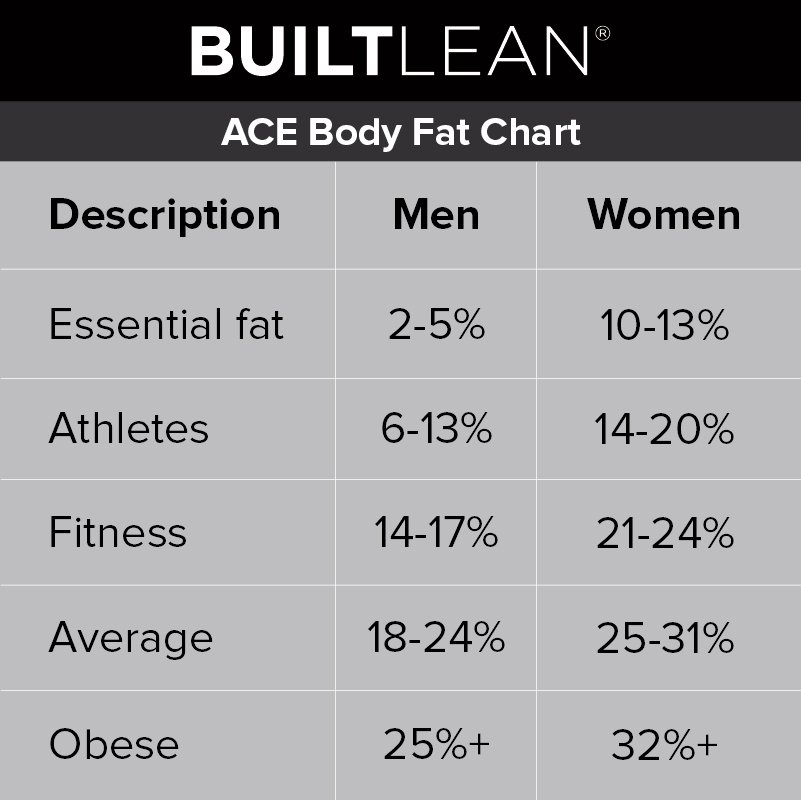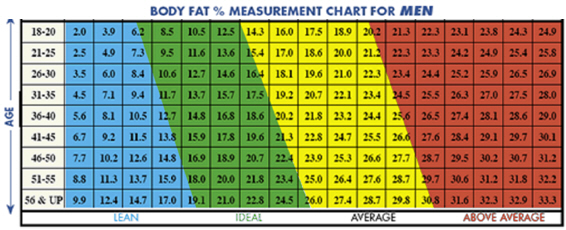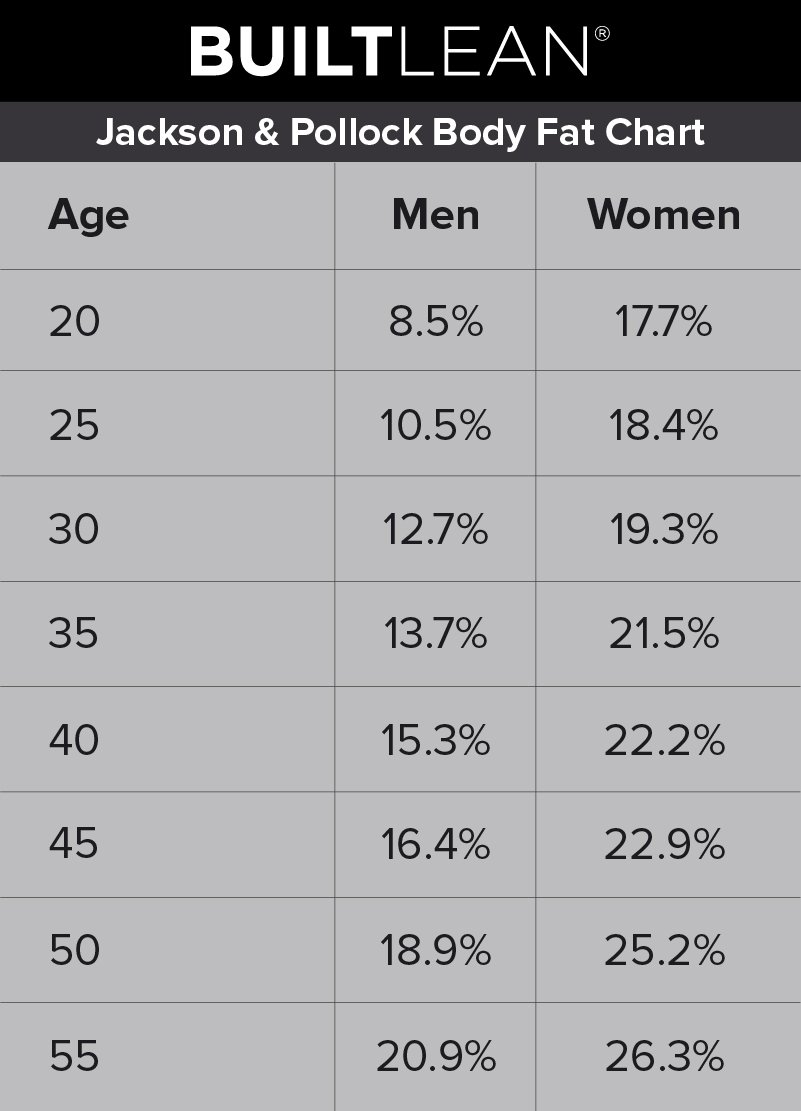While there is some debate as to what constitutes a “healthy” body fat range, I have below 2 different types of body fat percentage charts, which I will walk you through along with some insights into how to read each chart.
Ideal Body Fat Percentage Chart #1: ACE
The chart below from the American Council on Exercise (ACE) is one of the most commonly used body fat charts.1 As you can see, women have a higher body fat percentage relative to men for a given level. Women have more fat because of physiological differences such as hormones, breasts, and sexual organs. In addition, women need a higher amount of body fat for ovulation.

“Essential fat” is the minimum amount of fat necessary for basic physical and physiological health. There is a lot of controversy over what amount of body fat is optimal for overall health. A research paper by Gallagher et. al. in the American Journal of Clinical Nutrition (2000) came to the conclusion that certain low body fat ranges are “underfat”, which implies “unhealthy”.2 According to this research paper, men who are between 20-40 years old with under 8% body fat are considered “underfat”, whereas a “healthy” range is described as between 8-19%. For women in this same age group, any level under 21% is “underfat” and 21-33% is considered “healthy”.
In my opinion, I think body fat is one important measure of health, but stating a certain body fat level is “unhealthy” doesn’t give the whole story. In fact, some overweight people who exercise can be healthier than their leaner non-exercising counterparts.3 Conversely, to imply that anyone who has a six pack (below 8% body fat for men), is very athletic, and eats well is “underfat”, or “unhealthy” is a stretch. We all have different shapes, sizes, and fat distribution profiles, but I think the chart above is a good starting point.
The limitation of the ACE chart is that while it takes into account gender differences, it does not take into account your age, which is exactly why I included the next two charts.
Ideal Body Fat Percentage Chart #2: Jackson & Pollock
AccuFitness is the maker of the popular Accu-Measure Body Fat Caliper, which is a one site skin fold body fat measurement method. When you buy the product, AccuFitness includes a body fat percentage chart based on research by Jackson & Pollock (which has become the industry standard) that I think both aesthetically and from a health perspective is right on the money.
In case you don’t understand how to read this chart, the age column is on the left, the body fat percentages are in the chart, and the colors represent Lean, Ideal, Average, and Above Average ranges. So if you are a 30 year old man, a body fat percentage between 10% and 16% is considered “Ideal” and between 18% and 22% is considered “Average”, and so on. I also like how this chart has the color red to represent percentages that are too high and the green to represent ideal ranges. The first chart is for men, and the second for woman.


You may have noticed as your age increases, your acceptable body fat within these ranges increases as well. Why you ask? In short, these charts are based on statistical assumptions. Older individuals tend to have a lower body density for the same skinfold measurements, which is assumed to indicate a higher body fat percentage. Older, athletic individuals, however, might not fit this assumption because their body density may be underestimated.
Digging a little deeper, there are 3 types of fat: subcutaneous (under the skin), visceral (around the organs), and intramuscular (in between muscle, like a marbled steak). The amount of subcutaneous body fat you have may stay the same, but the visceral and intramuscular fat may increase as you age. For a visual representation of a given body fat level, you can check out this article:
- Exercise AC. Ace Lifestyle & Weight Management Consultant Manual, The Ultimate Resource for Fitness Professionals. American Council on Exercise; 2009. ↩
- Gallagher D, Heymsfield SB, Heo M, Jebb SA, Murgatroyd PR, Sakamoto Y. Healthy percentage body fat ranges: an approach for developing guidelines based on body mass index. Am J Clin Nutr. 2000;72(3):694-701. ↩
- Flegal KM, Kit BK, Orpana H, Graubard BI. Association of all-cause mortality with overweight and obesity using standard body mass index categories: a systematic review and meta-analysis. JAMA. 2013;309(1):71-82. ↩
No comments:
Post a Comment